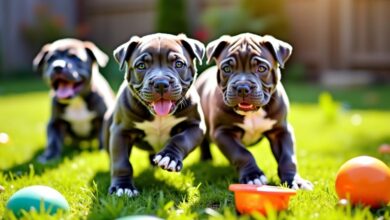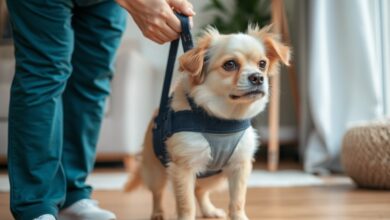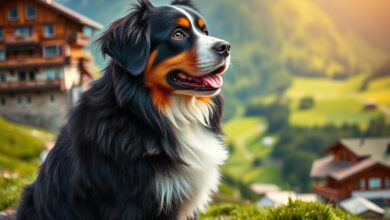Basset Hound Legs – 4 Unique Traits to Discover

Many dog lovers admire Basset Hounds for their distinctive appearance, especially their unique legs. If you’ve ever wondered why these short, sturdy limbs are so fascinating, you’re in for an enlightening exploration. In this post, you will discover four unique traits that set Basset Hound legs apart, including how their structure supports an exceptional sense of smell and contributes to their laid-back charm. Understanding these characteristics can enhance your appreciation for this beloved breed and inform how you care for your furry companion.
Anatomy of Basset Hound Legs
For anyone interested in Basset Hound anatomy, understanding their legs is necessary. These distinctive legs are not just a feature of their unique appearance but are crucial for their movement and ability to hunt. Their legs, characterized by their short stature, contribute to their overall low center of gravity, which aids in stability and agility while navigating diverse terrains.
Bone Structure
With a unique bone structure, Basset Hound legs are designed for endurance rather than speed. Their bones are heavier than those of many other breeds, providing a robust foundation that can support their weight while hunting. This distinct anatomy allows them to easily maneuver through thick brush, enhancing their tracking capabilities.
Muscle Composition
Structure plays a vital role in the muscle composition of Basset Hound legs. The muscles are specifically developed for stamina and strength, allowing these dogs to endure long hunts. The muscles in their legs are relatively powerful but often lack the quick-twitch fibers found in more agile breeds. This design supports their steadfast nature, allowing you to appreciate their steady pace and endurance when out in the field.
Basset Hounds should not be underestimated; while they may not sprint like a Greyhound, their muscular legs are built for long-lasting energy. The combination of strong quadriceps and robust hamstrings means they can traverse rough terrains with ease, giving you confidence in their tracking abilities. Additionally, their muscle composition reduces the risk of injuries compared to faster breeds, making them more resilient during long periods of activity. Maintaining a healthy diet and regular exercise is crucial to keep your Basset’s muscle mass optimal and prevent obesity, which can strain their unique leg structure.

Unique Traits of Basset Hound Legs
If you’ve ever marveled at the legs of a Basset Hound, you’re not alone. These unique limbs contribute to their distinctive appearance and function, showcasing traits that differ significantly from many other breeds. Understanding these traits will help you appreciate the innate abilities and characteristics of your furry companion as you recognize their short stature and charming demeanor.
Short and Sturdy Build
Build wise, Basset Hound legs are famously short and sturdy, which supports their low-to-the-ground stature. This characteristic allows them to maintain a strong balance and stability, crucial for tracking scents through thick brush or rugged terrains. Their build is particularly advantageous when pursuing their innate hunter instincts.
Flexibility and Mobility
Sturdy, as their legs may seem, Basset Hounds also display impressive flexibility and mobility. This trait allows for agile movements, even with their shorter legs. While they may have a relaxed demeanor, their legs enable them to explore and trot around with surprising ease.
With Basset Hound legs, you’ll find a balance between strength and agility. Despite their short stature, their legs allow for quick and efficient movements, especially when following their olfactory instincts. Additionally, their well-defined joints and muscle structure contribute to their ability to navigate diverse terrains effectively. These features emphasize the breed’s historical purpose as a hunting dog, making their lower limbs not just a defining characteristic, but also an crucial functional design that supports their versatility in the field.
Impact on Movement and Running
Some may overlook how the distinctive legs of a Basset Hound affect their overall movement and running abilities. With their short stature and heavy build, Basset Hounds are best suited for slow, deliberate walks rather than explosive sprints. Understanding these unique traits is crucial for any owner who wants to ensure their pup stays healthy and happy.
Gait Characteristics
Characteristics of a Basset Hound’s gait include a slow, rolling motion, which results from their short legs and elongated body. You might notice that their movement is less about speed and more about balance, as they compensate for their weight with a unique, rhythmical stride. This distinctive gait also reflects their historical purpose as scent hounds, designed for stamina over distance rather than quick bursts of speed.
Common Weight-Bearing Issues
The short legs and heavy build of Basset Hounds can lead to various weight-bearing issues that may impact their mobility. Given their anatomy, conditions like hip dysplasia and elbow dysplasia are more common in this breed, resulting in limited range of motion and discomfort.
Understanding these concerns is necessary for maintaining your Basset Hound’s quality of life. Regular veterinary care can help you monitor for signs of joint pain or mobility issues. Providing suitable exercise that accommodates their gait and weight can aid in prevention. Keeping your Basset Hound at a healthy weight is also critical to minimize risks related to their unique, short legs. With proper care, you can help your furry friend lead a happy, active life while managing their physical limitations.
Health Considerations
After welcoming a Basset Hound into your home, it’s crucial to understand their unique health needs. These dogs are prone to certain conditions due to their distinctive anatomy, particularly in relation to their legs and joints. Keeping a watchful eye on their health can ensure your furry friend enjoys a long and happy life. Awareness and prevention are important to mitigate potential health issues associated with their unique structure.
Joint Health
Considerations for your Basset Hound’s joint health include regular veterinary check-ups and monitoring for signs of discomfort. Their heavy and elongated bodies can create strain on their joints, making them susceptible to conditions such as hip dysplasia and arthritis. Providing a healthy diet, maintaining a healthy weight, and incorporating supplements like glucosamine can all contribute to better joint health.
Exercise Recommendations
Recommendations for your Basset Hound’s exercise routine involve short, engaging walks rather than intense sessions. These dogs are not built for endurance, so aim for regular, low-impact activities to ensure they remain active without putting too much stress on their joints. Always remember to incorporate playtime and mental stimulation, as they thrive in a balanced environment.
A well-structured exercise routine is vital for your Basset Hound’s overall well-being. Engaging them in short walks, around 30 minutes daily, can help manage their weight and reduce the risks of joint issues. Always monitor for signs of fatigue or discomfort, as their short legs can make strenuous exercise challenging. Consider outdoor play sessions at a pace suited to your dog’s abilities and preferences. By prioritizing consistent, low-impact exercise, you can promote a healthier lifestyle for your beloved Basset Hound.

Grooming and Care for Basset Hound Legs
Unlike many breeds, Basset Hounds require specific grooming practices to keep their unique legs in prime condition. Regular attention to their legs is vital, as their long, droopy ears and skin folds can be prone to dirt and moisture accumulation. This care ensures your Basset hound not only looks great but remains comfortable and healthy, avoiding any potential infections.
Cleaning Routine
Routine cleaning of your Basset’s legs is vital to prevent dirt buildup and keep the skin healthy. Use a damp cloth to gently wipe their legs after outdoor activities, focusing on the areas between the folds. This should become part of your weekly routine, ensuring their skin stays free from irritation and remains clean.
Nail Care Tips
Nail care is crucial for your Basset Hound’s well-being. Regular trimming will help avoid painful nail splits and prevent issues with mobility. To keep your Basset’s nails in good condition, follow these tips:
- Trim your Basset Hound’s nails every 3-4 weeks.
- Use a sharp, safe nail trimmer designed for dogs.
- Be cautious to avoid the quick (the blood vessel inside the nail).
Any improper trimming can result in severe bleeding, so it’s best to approach nail maintenance cautiously.
Another important aspect of nail care is understanding the signs of overgrown nails. Watch for these indicators:
- If your dog’s nails click on the floor when they walk.
- If they show discomfort or reluctance to walk.
- If you can see a noticeable curvature in the nail.
Any of these signs means it’s time for a trim, ensuring your dog remains comfortable and active.
To wrap up
Summing up, understanding the unique traits of Basset Hound legs can enrich your appreciation for this distinctive breed. You’ll find that their short stature, strong build, remarkable flexibility, and distinctive stance all contribute to their adorable and endearing appearance. By recognizing these features, you’ll not only enhance your bond with your Basset Hound but also become a more informed owner, better equipped to meet their needs and appreciate their quirks. Embrace the charm of Basset Hounds and make the most of your time with these lovable companions.





